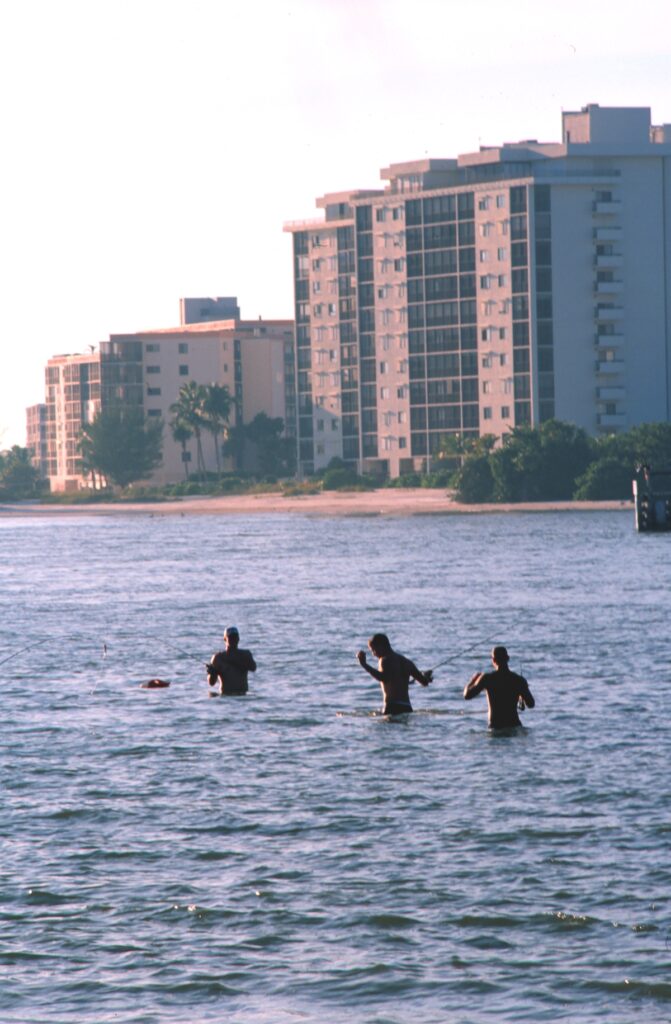
Moving to Fort Myers Beach, Florida: A Comprehensive Relocation Guide
Considering moving to Fort Myers Beach, Florida? This barrier island town offers white sand beaches, fishing pier, and casual Gulf Coast lifestyle. With approximately 6,500 permanent residents in 2025, Fort Myers Beach combines beach town character with access to Southwest Florida amenities and world-class sunsets.
Demographic Profile to Consider If Moving to Fort Myers Beach:
Fort Myers Beach’s 2025 permanent population is approximately 6,500 residents, though the area swells significantly with seasonal visitors and tourists. The median age is around 60 years, with retirees, business owners, and hospitality workers. The population is approximately 90% White, 7% Hispanic. Located on Estero Island in Lee County, Fort Myers Beach stretches along seven miles of Gulf Coast shoreline. The town centers on Times Square and the historic Fort Myers Beach Pier. The community attracts those seeking authentic beach town living with views of spectacular Gulf sunsets. Note that Hurricane Ian in 2022 significantly impacted Fort Myers Beach, with ongoing rebuilding and recovery shaping the community’s character in 2025. Find trusted local services for moving, living, and working in Fort Myers Beach.Fort Myers Beach Relocation Directory
Cost of Living to Consider If Moving to Fort Myers Beach:
Fort Myers Beach represents premium pricing for Southwest Florida beachfront living. Median home values range from $600,000 to $900,000 in 2025, with beachfront properties commanding millions. Post-hurricane rebuilding has influenced pricing and availability. The median household income is approximately $65,000, though many residents are retirees with substantial assets. Rental properties average $2,500 to $4,000 monthly, with vacation rental markets affecting long-term availability. Florida’s lack of state income tax benefits residents, though coastal property insurance costs are substantial. Overall cost of living reflects the island’s limited space, beach access, and tourism economy. Fort Myers Beach attracts affluent retirees and second-home owners seeking Gulf Coast lifestyle.
Economy and Job Market:
Fort Myers Beach’s economy centers entirely on tourism and hospitality. Restaurants, beach resorts, fishing charters, water sports operations, and retail shops along Estero Boulevard create most employment. The Fort Myers Beach Pier and Times Square area anchor commercial activity. Fishing industry including charter boats and marinas provides jobs. Many residents are business owners, retirees, or seasonal workers. Property management and real estate sectors support vacation rental and second-home markets. The town’s economy fluctuates seasonally with peak tourist season November through April. Some residents commute to Fort Myers for employment in healthcare, professional services, and other sectors. Hurricane recovery efforts have created construction and rebuilding employment.
Education:
Lee County School District serves Fort Myers Beach students, with children typically attending schools in nearby Estero or Fort Myers. The small permanent population includes few school-age children. Florida SouthWestern State College and Florida Gulf Coast University provide higher education options in Fort Myers. The educational infrastructure focuses on serving mainland Lee County, with beach communities having limited on-island school facilities.
Recreation and Lifestyle:
Fort Myers Beach offers seven miles of white sand Gulf beaches with spectacular sunset views. The historic Fort Myers Beach Pier provides fishing, dining, and entertainment. Times Square serves as the town center with shops, restaurants, bars, and beach access. Residents enjoy fishing, boating, parasailing, jet skiing, and beach activities year-round. Lynn Hall Memorial Park offers beach facilities and recreation. The town hosts events including the American Sand Sculpting Championship and Shrimp Festival. Nearby attractions include Lovers Key State Park and Bonita Beach. Water sports, beach bars, and casual dining define the lifestyle. The subtropical climate and Gulf location create a permanent vacation atmosphere. The community embraces beach town culture with laid-back energy and spectacular natural beauty.
Healthcare and Services:
Fort Myers Beach residents access healthcare primarily through facilities in Fort Myers including Lee Health hospitals and numerous medical offices. Limited medical services exist on the island, with most residents traveling to Fort Myers for comprehensive care. Emergency services operate on the island with quick access to mainland hospitals. The area’s healthcare infrastructure serves both permanent residents and seasonal visitors.
Transportation:
Fort Myers Beach is accessed via Estero Boulevard from Fort Myers Beach Causeway (State Road 865) and connecting bridges from mainland Lee County. The town’s linear development along the island makes navigation straightforward. Southwest Florida International Airport is approximately 30 minutes via the causeway. LeeTran operates beach trolley service along Estero Boulevard. Most residents use personal vehicles, though bicycles and golf carts are popular for local travel. Traffic congestion occurs during peak tourist season.
Conclusion:
Moving to Fort Myers Beach in 2025 offers authentic Gulf Coast island living with spectacular beaches, fishing pier, and casual atmosphere. The town’s combination of white sand, sunset views, and beach culture makes it ideal for retirees and beach enthusiasts seeking Southwest Florida’s premier beach lifestyle, with ongoing recovery creating opportunities in a resilient community.

